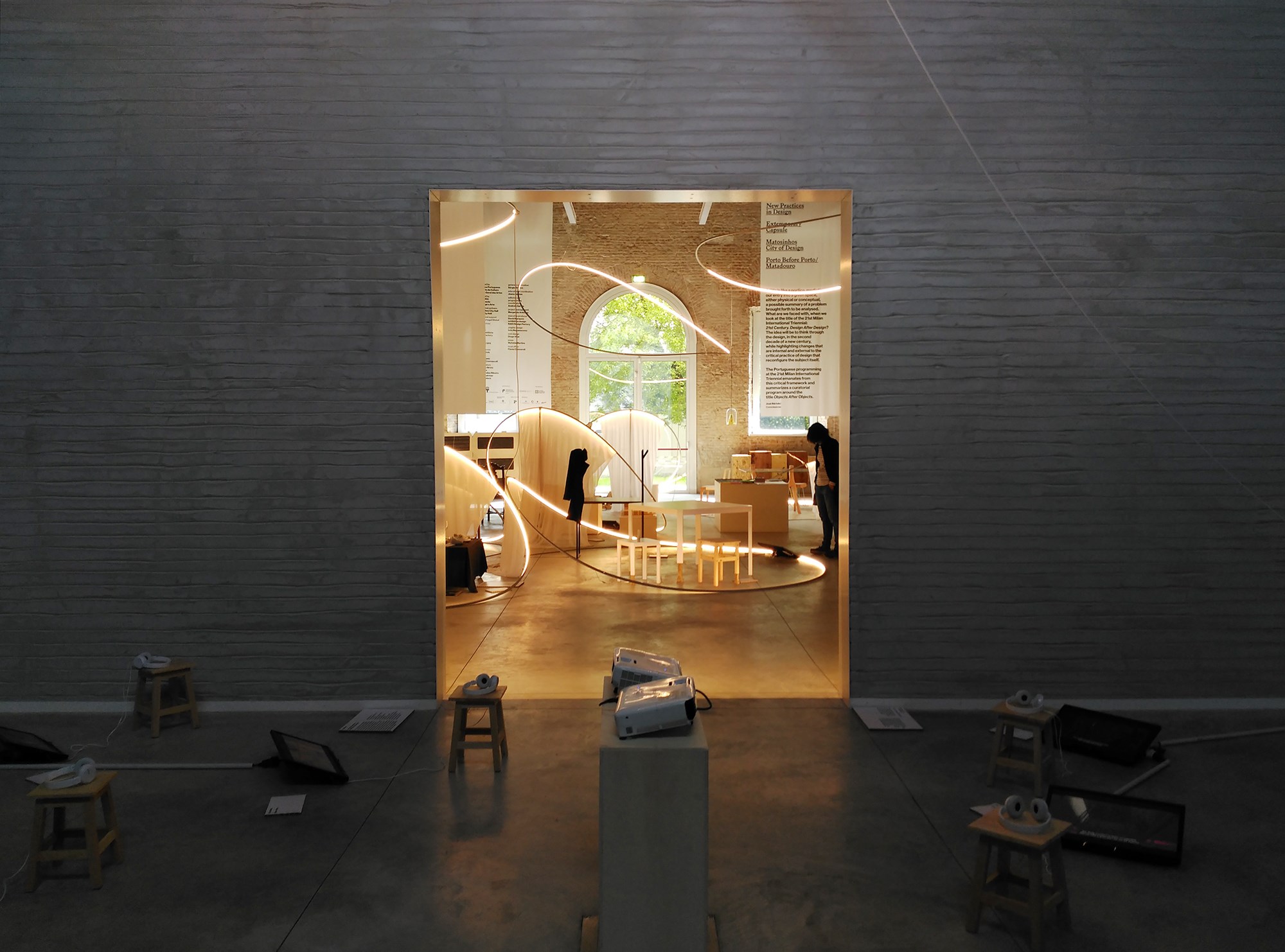Objects After Objects and the Aftermath of the Exhibition
Portugal at the 21st Triennale di Milano International Exhibition
Architect and editor
Triennale di Milano is the name of a cultural institution created in Monza in 1923, now located in Milan at the Palazzo Dell’Arte in the luxuriant Parco Sempione. Since its creation, it has organised great International Exhibitions, starting with biennales and then triennales that have been hosted at irregular intervals over time. The great palace of the Triennale is also dedicated to a vast diversity of exhibitions and conferences, focusing predominantly on art, architecture, design, fashion and cinema.
This year the institution organised the 21st International Exhibition with the theme 21st Century. Design After Design, bringing together a group of participating countries dispersed across different spaces within the city. Taking this vague theme, the scientific committee 1 proposed an extremely encompassing contextualisation: touching upon death, the sacred, Eros, traditions and history; adding questions of gender and globalisation in design; transformations brought by the 21st Century and by the 2008 crisis; the relationship between cities and design; accessibility to new information technologies, and an exploration of the craftsmanship. It was an extremely confusing approach to which the countries tried to produce a response.
After 12 years of absence from the event – the last representation was in 2004 with “Disegnare nelle Città”– Portugal presents Objects After Objects at the Museo Nazionale della Scienza e della Tecnica “Leonardo da Vinci”, its 4th participation in the event, combining product and interior design with architecture. The general-curatorship is by José Bártolo (curator and professor in the field of design), the curating by the architects Roberto Cremascoli and Maria Milano and the production by the Escola Superior de Arte e Design (ESAD) de Matosinhos.
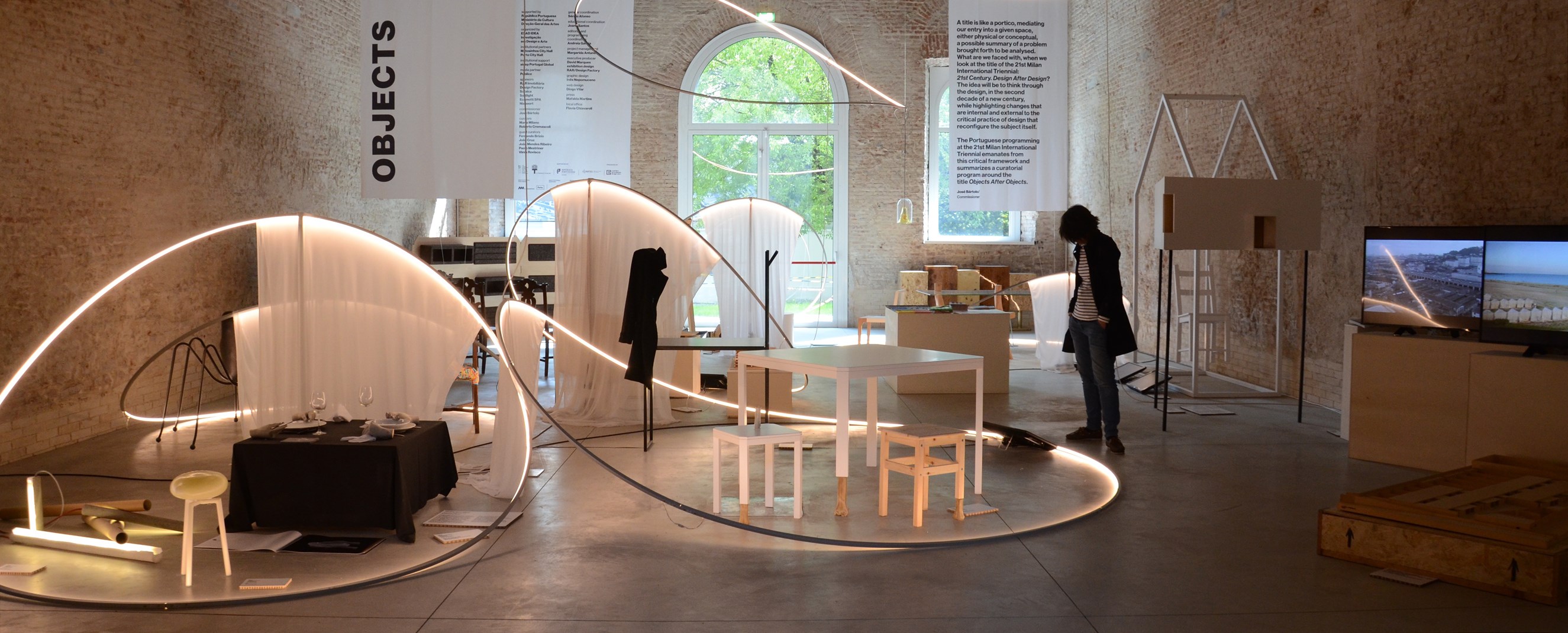
The origin of this official representation
“It all began with an ‘informal’ invitation from the Triennale to his contacts at ESAD”, explains Bártolo in the Público newspaper (23/03/2016). Apart from the invitation, there seems to be a non-state school involved in the project right from the start. Jorge Barreto Xavier, who was then Secretary of State for Culture, initiated this official representation by setting aside €36,000. In order to increase the budget, it was necessary to find patrons and sponsors, and for this purpose companies and municipalities were involved in the process.
Two press conferences in Lisbon – at MUDE (December 2015) and at the Palácio Nacional da Ajuda (March 2016) – convened the media and informed the public about the high expectations for the curatorial project, bringing together the representatives of the institutions involved and listing the names of the participants.
Programme and curatorial project
The curatorial approach presented by Bártolo and the curators concerns a critical examination of the 14th edition of the Triennale in 1968, an event curated by Giancarlo de Carlo and that was destroyed by student protesters before it inaugurated – it contained content that was considered “bourgeois” – in an act related to the May 1968 events in France. At the same time the programme proposes a “reflection on the practice of the contemporary project, its radicalization, the way it is taught, its production, and its creative, economic and political dimension”. Emphasis is given to the idea of School. The proposal is seductive, but it lends itself to difficulty (by dispersion) in converging with the themes of the Triennale. The summation is not easy and the exhibition is also in itself confusing.
The inclusion of an educational institution and the work of students was a choice that is not always common in the history of national representations. ESAD Matosinhos was involved in the production, participated in the proposed workshops and assembled the exhibition. An inclusive process, which aimed to stimulate the participation of the students and exhibited their work, fostering networks with other schools, like the Politecnico di Milano (an Italian public school).
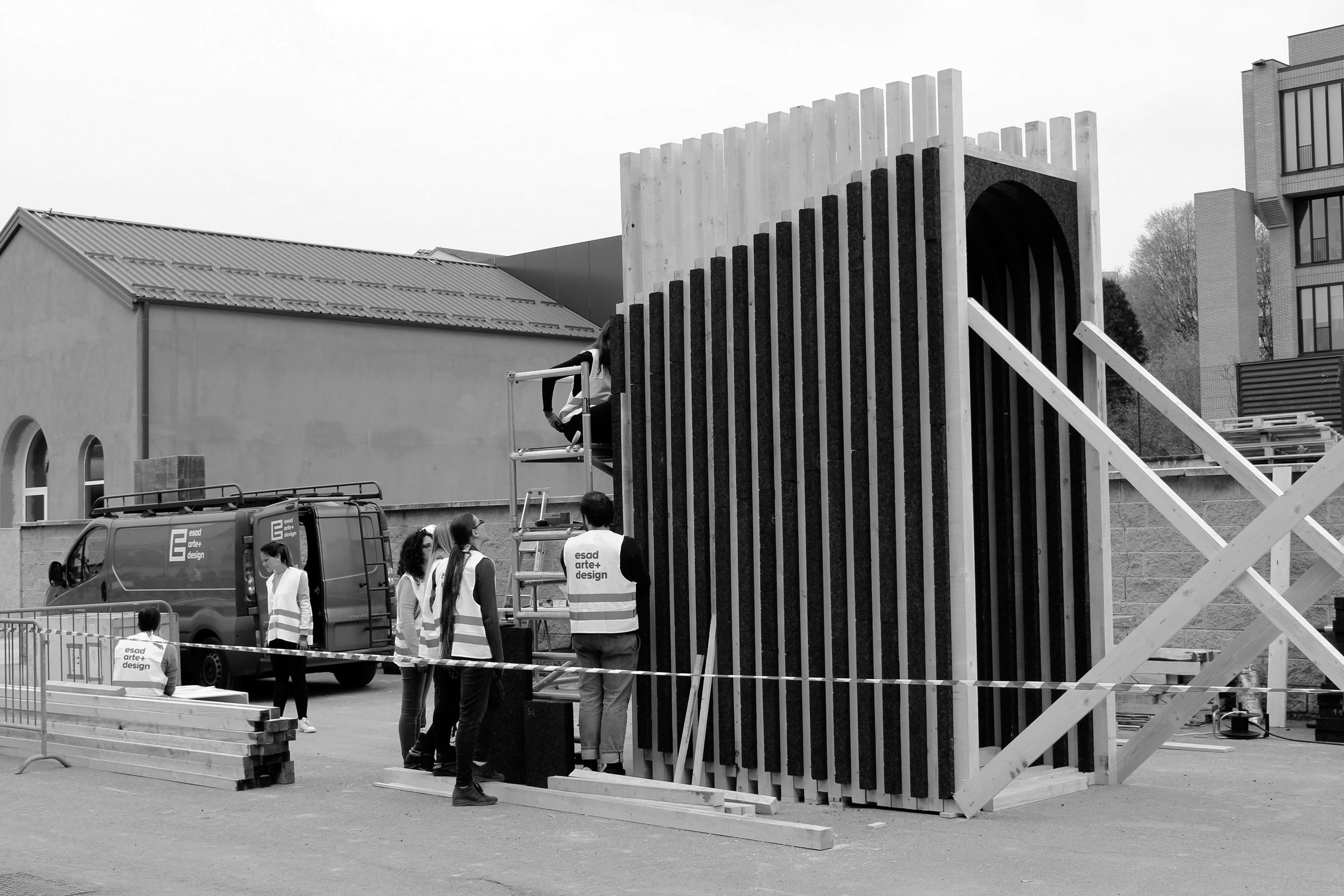
The National Representation
The extremely photogenic part of the Leonardo da Vinci Museum that houses some of the national representations of this 21st International Exhibition was once stables. Portugal is alongside Afghanistan, Albania, Germany, Algeria, Croatia, Greece, Lebanon, Lithuania and Myanmar. The vicinity also houses presentations by the company Caimi Brevetti S.P.A./Italy and a peculiar display of small meditation spaces. In general this ensemble is not especially interesting, the exhibitions are weak, discouraging and not exactly advantageous to the Portuguese project.
The Portuguese exhibition extends over two rooms covering a total area of 225m2 (along with the Extemporary Capsule installation created by the ESAD students, located outside the building). The first room presents small groups of product design objects: New Design Practices, curated by José Bártolo, and The Reinvented Object, resulting from three workshops with the students about reusing objects, curated by Maria Milano. The objects are accompanied by several videos where the workshop's tutors (Paolo Deganello, Fernando Brízio, João Mendes Ribeiro, as well as Vânia Rovisco, choreographer of the workshop led by Mendes Ribeiro) talk about the work developed. Two other videos reveal the presentations from the Porto and Matosinhos municipalities. As we progress through the exhibition, there is a collision with this content: a video about the city of Matosinhos proudly shows its characteristics and the investment it makes in the fields of design and architecture, accompanied by a model of Souto de Moura’s Casas Pátio, on loan from the Casa da Arquitectura. The other video presents a project that Porto’s Municipality is seeing through at the old Matadouro (slaughterhouse). These pieces confuse the understanding of the exhibition and give the representation a regionalist tone, a consequence of concessions that are not in line with the curatorial proposal.
The other room focuses on architecture, distinguishing two generations: a younger and emerging one, comprising 10 participants (individuals and collectives), and the other presenting 13 'master' architects.
The division of the rooms breaks any possible unity and disrupts the much-desired symbiosis between design and architecture. Here, we are confronted with two different exhibitions.
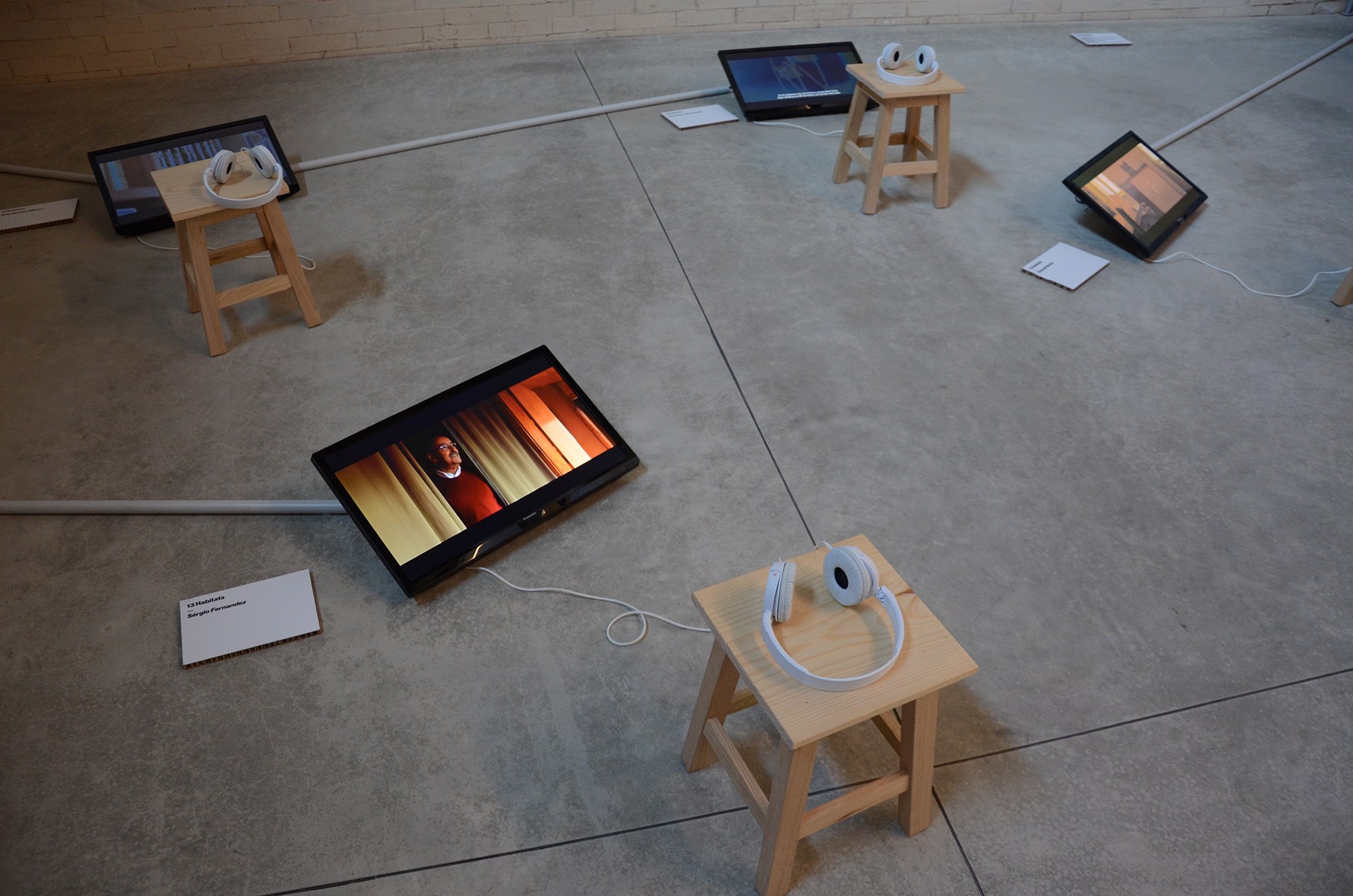
13 Habitats (curated by Roberto Cremascoli and Maria Milano)
13 'master' architects, all men, were invited to express in three minute videos – presented on 13 screens scattered across the room's floor – their idea of habitat as a practice and as a “space of happiness”: Adalberto Dias, Alexandre Alves Costa, Álvaro Siza, Eduardo Souto De Moura, Gonçalo Byrne, João Mendes Ribeiro, José Adrião, José Carlos Loureiro, João Luís Carrilho da Graça, José Manuel Carvalho Araújo, Manuel Aires Mateus, Manuel Graça Dias and Sérgio Fernandez. The programme's directives dictated that “Architects are refined intellectuals and cultural agents who, through projects, convey values and interpret a society’s ways of living, contributing towards shaping and informing the spirit of our time. There is always a relationship between the shape of a given space, and the life that unfolds within that space.”
We could suppose that the logic behind this choice was to represent a generation whose work was contemporary to the May 1968 events. It is a fact that Architecture was once a predominantly male profession, a situation which has since become more balanced, but the youngest participant is José Adrião (n. 1965), thus excluding this explanation. It would have been important to present the perspectives of other architects from this generation, for example Ana Tostões (n.1959), Teresa Novais (n.1962), Paula Santos (n.1962), Cristina Veríssimo (n.1964), Cristina Guedes (n.1964) or even Inês Lobo (n.1966) – who is one year younger than Adrião and has a considerable body of work, both planned and constructed. As a result, this lack of gender equality stands as a failure in the selection of these representatives as a response to the themes proposed by the Triennale.
The habitats that we visit are heterogeneous: some architects invite us into their own homes; others stand in their ateliers and talk about their concept of inhabiting and their attitude towards conceptualising the habitats of others. The experience would be more consistent – and less traditional – if they all reflected on what it is to conceptualise the idea of their own habitat.
There is a certain degree of romanticism in these films, focusing on the architects’ objects, invoking a poetic idea of their status as collectors of objects of design, art or even books. Some cases create a feeling that we are watching a television programme (the choice of music helps…) – perhaps even the directing (by Bruno Carvalho) failed to accompany the content in the best way. It is not always easy to film space or transmit the sensation it creates, and sometimes when talking about space, only the decoration comes through. In the case of Sérgio Fernandez’s video the opposite occurs: both the space and the discourse are fully comprehended, which can be justified by the scale of the “object” Casa de Caminha (1971-73).
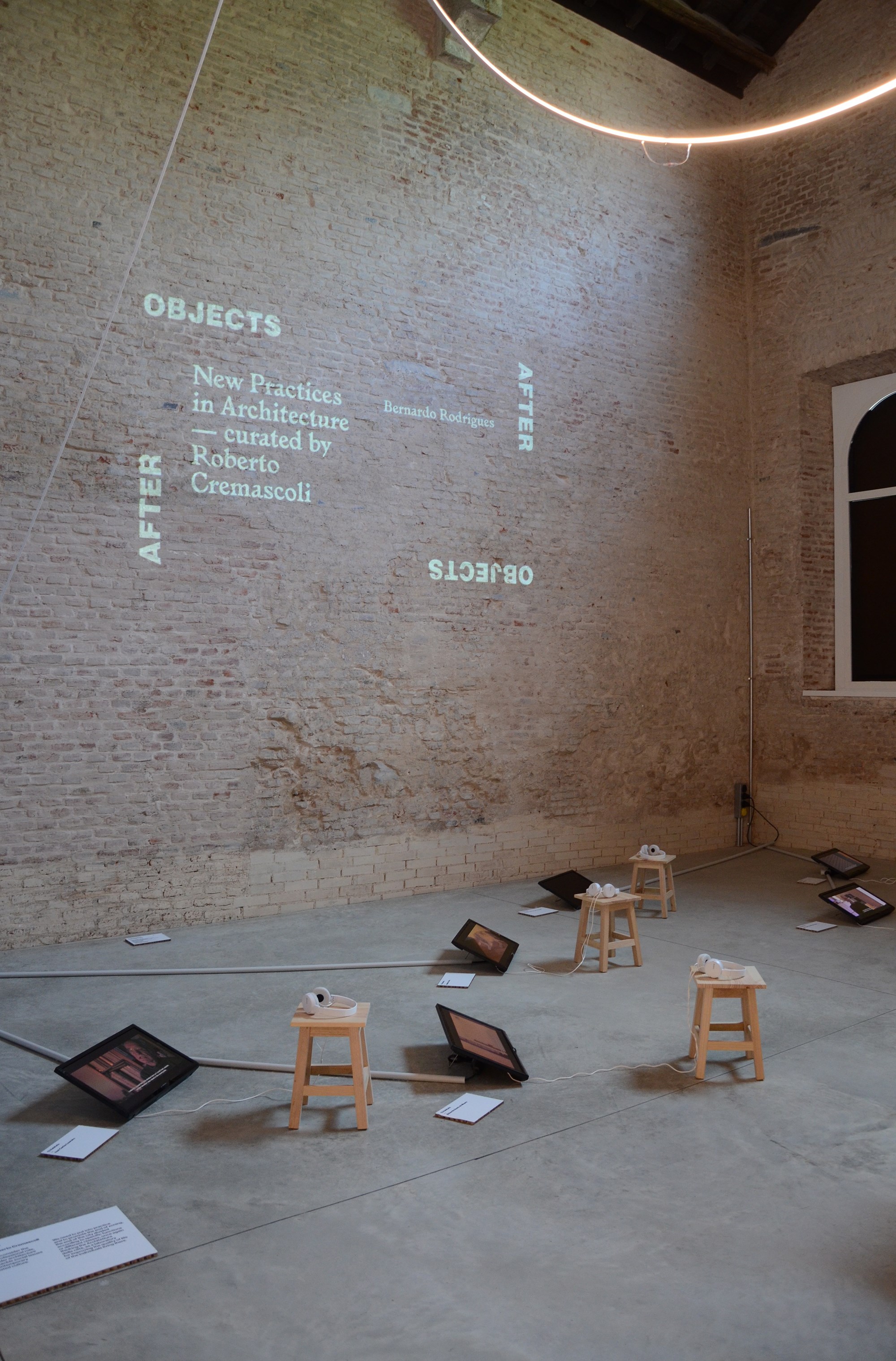
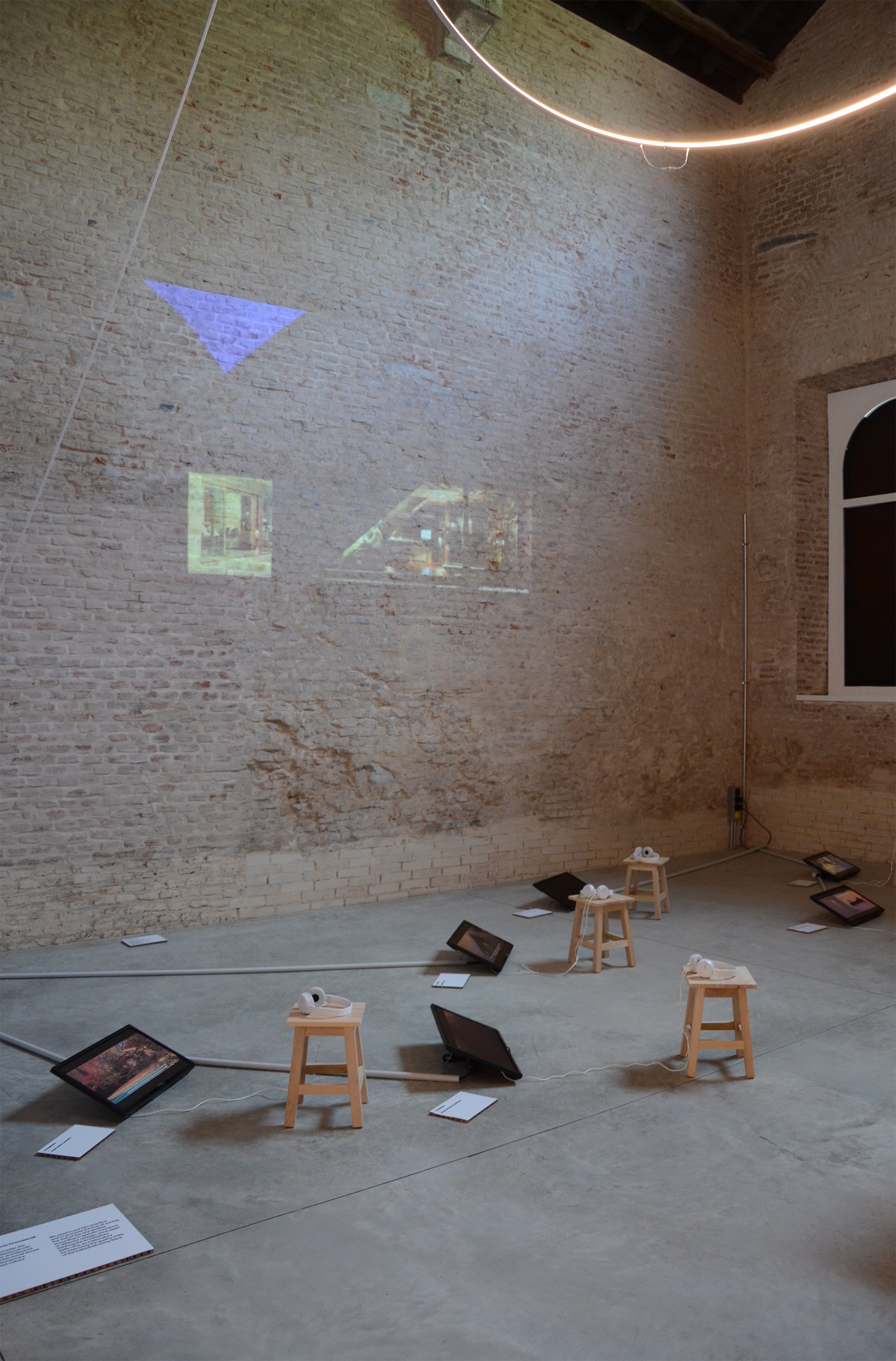
New Architecture Practices (curated by Roberto Cremascoli)
Sharing the room with the 13 habitats are the 10 emerging architecture practices, showing work in the context of social intervention – emergency and participative processes with limited resources are themes described in the programme – and performative architecture: JQTS, Ateliermob, Bernardo Rodrigues, CAN RAN, Fahr 021.3, Moradavaga, Nuno Abrantes, Pedro Bandeira, Pedro Rogado and SAMI. These presentations are limited to a projection of slides on the wall with very few references, diluting the foundation behind the selection of these projects.
It would be interesting and more coherent if there were higher degrees of homogeneity in this representation, for example, why not present the views of this new generation on the idea of habitat? Surely, considering the diversity of experiences, different conceptualisations would be revealed.
Concerns of the Representations
Visiting the 21st Milan Triennale raises several questions. Beginning with the selection of the representation, what should the criteria be – there is an external invitation to a Portuguese entity and a project is presented? Shouldn't the State scrutinise the choice and the represented project?
As budgets are so limited, these events are forced to take on an entourage of sponsors (albeit public) that also cultivate the ambition to be seen. Where is the line between sponsor and content drawn? Who should be responsible for the limitation of these 'intrusions': the commissioners, the curators or, given its position as the 'promoter' of the official representation, the State itself?
While there is room for various models of participation, the way in which these are accomplished is important. The theme of the event and the curatorial discourse need to be congruent and the desire to incorporate several pieces of content leads to a substantial dispersal of ideas. A curatorial project should reflect a synchronicity and unity in terms of research and not be an amalgamation of disparate parts that cannot be understood as a whole.
Lastly, in light of the results presented, it is important to understand if the Portuguese participation in the International Exhibition of the Milan Triennale is worth continuing. In the absence of sizeable resources for these events, the pertinence of the presence of the country is questionable, especially considering the management of agreements and concessions, as was the case with this year’s edition. Does it really have an international impact or does the event merely serve the purpose of allowing us to say that we were present, exchanging a few “likes” and compliments on social networks, without an accurate contextualisation of its general appearance, of the international dialogue that it drives, or if the event is at all favourable or not. Does it make sense to disperse efforts across different events, or would it not be better to concentrate on one that is truly significant? Taking a deeper look, this experience may warrant an evaluation to define the course of future participations. ◊
NOTE: Part of the exhibited content is going to be presented at the National Coach Museum in Lisbon starting September 30th. The 13 habitats can be seen here. We were informed that they are excerpts of 25-minute films, which are part of a project with the Público newspaper that will be presented in the near future.
